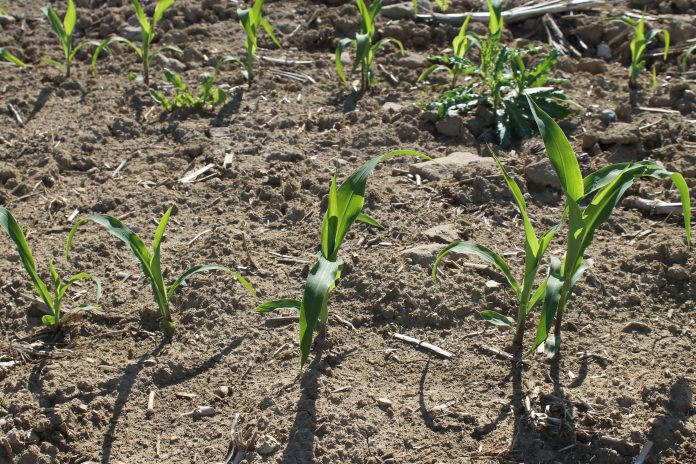The tendency in the middle of May is for farmers to ignore marketing and concentrate on planting. In the 10 days leading up to May 24, farmers caught up planting in Ohio to levels above the average pace.
At the same time, the serious break in grain prices that had been caused by fast planting in the main Corn Belt and recent rains has stopped.
Planting
First, we’ll address the planting. I use May 24 because that was Monday, the day the last U.S. Department of Agriculture crop progress report was released. Because of the holiday, this week we will have the report of Sunday night progress in the middle of the day Tuesday.
Ohio farmers had been held up with regular small rains for 10 days in early May while farmers in major producing areas had good planting weather. Farmers in much of the lower Midwest had reported being done in April, with some finishing in early May.
Locally, farmers got into the fields in large numbers on May 14 and 15. Over the next eight or nine days, Ohio farmers planted at a record pace, putting in 37% of the soybeans and 37% of the corn in just one week. That got us to 76% of the corn planted, against the average 58%, and 66% of the soybeans planted, against an average of only 38%.
Meanwhile, the U.S. had plantings that were well ahead of normal and still ahead of Ohio. The corn was 90% planted, when normal is 80%. The soybeans were 75% planted, but the average is 54%. Remember, those numbers are for last week.
I would assume that the following week, to be reported a couple of hours after this goes to press, will not show significant gains in Ohio.
We have had steady showers a couple of days and drizzles a couple more. The biggest acres on the best ground are planted. The rest will struggle between raindrops, but we should finish earlier than normal.
As June begins, most of the acres are in for a change. They are in a little early and in great conditions, presaging a great crop if we have good continuing weather.
Market
Now we’ll discuss the market. Some observers are now opining that we have seen the end of our first weather market. Old crop prices over $7 and new crop over $6 were amazing and deserved a break.
The good news about a break is that it gets new money in the market. All of those people who did not buy futures on the way up now have another chance.
Rain in the dry areas of the Corn Belt helped break prices, but weather predictions from a prominent forecaster helped prices heat up again.
Beware that the Western Corn Belt, especially the Upper Western, has been dry. Timely rains are helping there, but now we have forecasts of a hot and dry period in July and August in the Central U.S. This is more of a factor than it used to be, since we are growing more of our corn and beans in the Northern Plains, especially the Dakotas, than we used to.
The result of the forecast last week was a May 27 with July corn futures up the 40-cent limit, and the December new crop futures up 30 cents. So, we are back to the races. We have a big loss to make up, however.
July futures lost $1.32-1/2 from the high of $7.35-1/4 on May 7 to the low May 26 at $6.02-3/4. December futures lost almost $1.38 at the same time. But, in early trading May 31, we were at $6.65-1/4 for the July and $5.56-1/2 for the December after being down May 28 before the long weekend.
Soybean futures were not as relatively volatile. July futures had the contract high May 12 at $16.67-1/2, but a low of $14.89-1/4 May 26. That is a swing of almost $1.80. November futures had the high of $14.61 on May 12, and the low of $13.25-3/4 May 26. That is a swing of 1.85.
And, the good news is that we were having a rebound May 31 as this was being written. July futures were at $15.45, up almost 15 cents, and November futures were at $13.88, up more than 15 cents. Both of these gains came after losses May 28 before the holiday.
Wheat
For the week, Chicago wheat futures were down 11 cents, but the Minneapolis spring wheat was up 27 cents.
There are a lot of problems in the spring wheat, with lowered acres from price competition and dry weather for the acres planted. The Hard Winter crop has been in trouble with dry weather but is now seeing rains.
This is a mixed blessing, as bad things can happen to wheat that finishes the maturity in wet weather. July Chicago wheat futures put the double high in with $7.69-1/2 on April 27 and then $7.67-1/2 on May 7. The low came May 26 at $6.39-1/2.
Early on June 1 we were up 15-1/4 cents at $6.78-3/4, a nice rebound, but still 90 cents or so below the high early in May.













